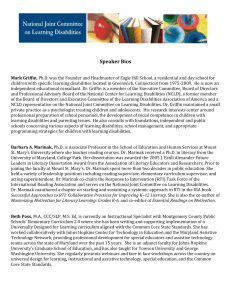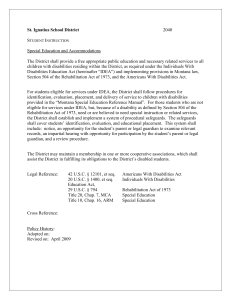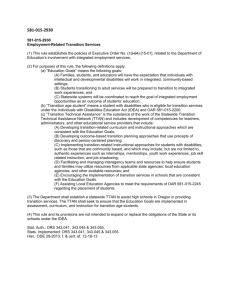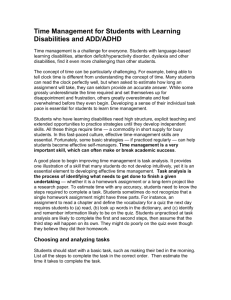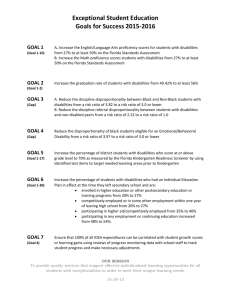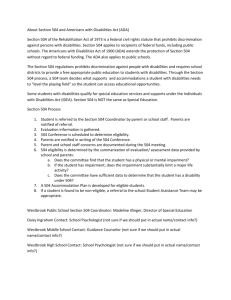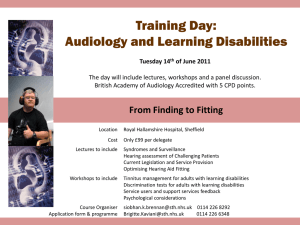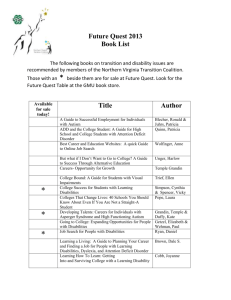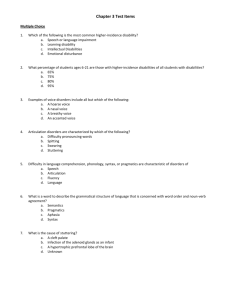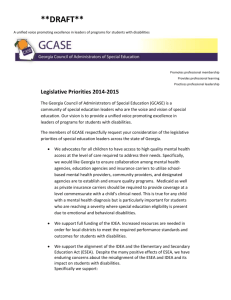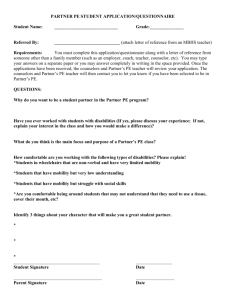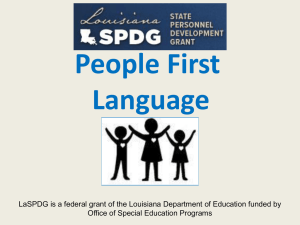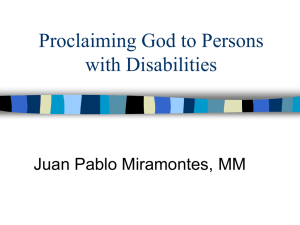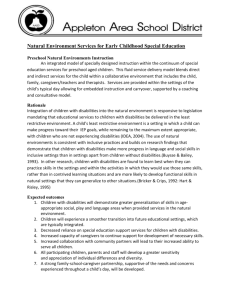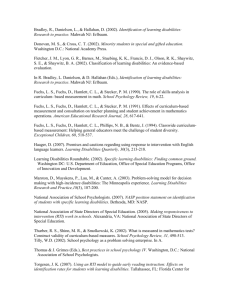Teaching Students with Learning Disabilities at Middle
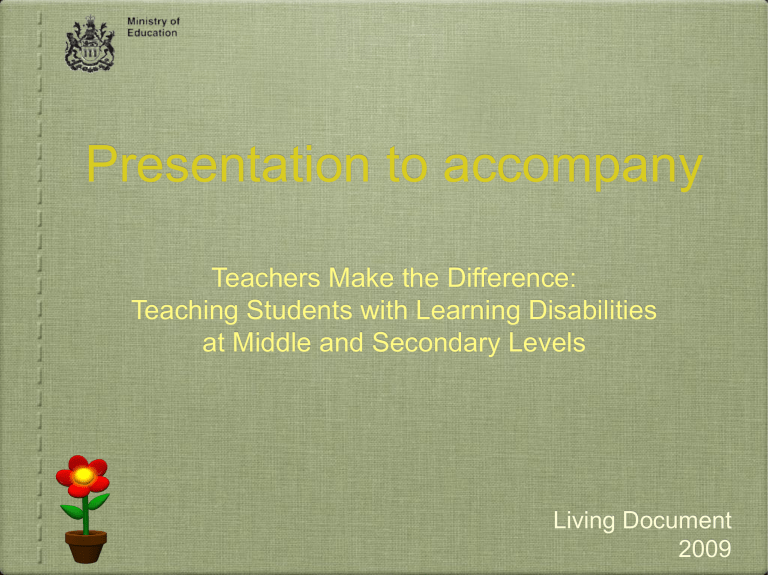
.
Presentation to accompany
Teachers Make the Difference:
Teaching Students with Learning Disabilities at Middle and Secondary Levels
Living Document
2009
Primer
•
The user can click on a topic in the Table of
Contents and be directed to the appropriate page.
•
The green boxes provide the reader with highlighted information.
•
The yellow boxes provide the reader with boxes that can be “check marked.”
•
The CHECKLISTS section provides the user with boxes that can be either “check marked” or
“filled in with text.”
•
The user can SAVE all changes made to the document.
Response to Intervention
•
The Ministry of Education promotes the multi-tiered
Response to Intervention (RTI) process which provides a continuum of services, supports, and interventions to students.
•
The RTI process is effective in serving the needs of all students (including students with learning disabilities) because of its focus on school-wide, group, and individual interventions.
Response to Intervention
Model
National Definition
•
A student with a learning disability has unique learning needs and strengths that are different from other students with learning disabilities.
• The Learning Disabilities Association of Canada’s definition of learning disabilities can be found at http://www.ldac-taac.ca
.
A Student with a
Learning Disability has . . .
• average or above average cognitive ability
(thinking and reasoning).
• processing difficulties.
• below average academic achievement.
• unexpected academic underachievement.
Receiving and Processing
Information for Learning
Information Processing Model
Adapted from Walcot-Gayda, 2004
Processes Related to perceiving, thinking, remembering, or learning
•
Language Processing
•
Phonological Processing
•
Visual-Spatial Processing
•
Processing Speed
•
Memory
•
Attention
•
Executive Functions (planning or decision making)
Planning for Effective and Differentiated
Instruction and Assessment
Flow Chart
Effective Instruction
•
Differentiated Instruction and the Adaptive Dimension
•
Brain Compatible Instruction
•
Instructional Groupings
•
Explicit Instruction
•
Scaffolded Instruction
•
Metacognitive Instruction
•
Strategy Instruction
•
Content Enhancement
•
Effective Feedback
•
Performance Monitoring
Effective Assessment
•
Used Before Instruction (Diagnostic)
•
Used During Instruction (Formative)
•
Used After Instruction (Summative)
.
REFERENCES and CHECKLISTS
For a complete list of references and user-entered checklists, please consult the document titled,
Teachers Make the Difference:
Teaching Students with Learning Disabilities at Middle and Secondary Levels



